- Home
- Kathy Reichs
Grave Secrets
Grave Secrets Read online
“Fans of TV’s CSI: Crime Scene Investigation should be in heaven” (People) stepping into the world of forensic anthropologist Dr. Temperance Brennan, star of Kathy Reichs’ electrifyingly authentic bestsellers.
A harrowing excavation unearths a chilling tragedy never laid to rest.
They are “the disappeared,” twenty-three massacre victims buried in a well in the Guatemalan village of Chupan Ya two decades ago. Leading a team of experts on a meticulous, heartbreaking dig, Tempe Brennan pieces together the violence of the past. But a fresh wave of terror begins when the horrific sounds of a fatal attack on two colleagues come in on a blood-chilling satellite call. Teaming up with Special Crimes Investigator Bartolomé Galiano and Montreal detective Andrew Ryan, Tempe quickly becomes enmeshed in the cases of four privileged young women who have vanished from Guatemala City—and finds herself caught in deadly territory where power, money, greed, and science converge.
“POWERFUL . . . A PAGE-TURNER.”
—The Hartford Courant (CT)
“THE MEDICAL DETAILS . . . [ARE] VIVID AND FASCINATING.”
—Booklist
“CHILLING.”
—People
Includes an excerpt from Bare Bones—available now!
Register online at www.simonandschuster.com for more information on this and other great books.
www.fox.com/bones
TM & © Fox. All Rights Reserved.
“Temperance Brennan is the real thing.”
—Newsday (New York)
CRITICAL RAVES FOR NEW YORK TIMES BESTSELLING AUTHOR
KATHY REICHS
and her powerful thrillers featuring her fictional counterpart, forensic anthropologist Dr. Temperance Brennan
GRAVE SECRETS
NEW YORK TIMES BESTSELLER
“Riveting.”
—St. Louis Post-Dispatch
“Enough narrative protein and complex carbohydrates to qualify as [a] summer reading power bar.”
—The News and Observer (Raleigh, NC)
“The medical details . . . [are] both vivid and fascinating.”
—Booklist
“Ghoulishly entertaining.”
—The New York Times
“Cleverly plotted . . . entertaining.”
—Sunday Telegraph (London)
“Reichs is in a class all by herself.”
—Ann Rule, New York Times bestselling author of Last Dance, Last Chance
A Main Selection of the Book-of-the-Month Club and the Literary Guild
Also Available from Simon & Schuster Audio
FATAL VOYAGE
NEW YORK TIMES BESTSELLER
“Buckle up and take this voyage.”
—People
“The plot moves with electric force. . . . Morbid yet captivating.”
—Publishers Weekly
“Reichs is at the top of her game . . . Reichs proves once again that she is master of the genre; her science is impeccable, her characters are believably complex, and her plotting and pacing are nearly flawless. Often compared to Patricia Cornwell, Reichs is raising the bar.”
—Library Journal (starred review)
“A complicated, involving mystery.”
—Booklist (starred review)
DEADLY DÉCISIONS
#1 INTERNATIONAL BESTSELLER
“A high-octane forensic thriller.”
—People
“[Kathy Reichs] knows more about forensic anthropology and building intricate suspense than any other author I’ve found in a decade. Her research isn’t the obvious research of many mystery writers: quite clearly, Reichs has been there herself. That makes the difference between light reading and a classic.”
—Ann Rule, New York Times bestselling author of Last Dance, Last Chance
“This is a mystery for the intelligent mystery fan. . . . Reichs has brought the detective story into the twenty-first century.”
—The Toronto Sun
“Bloody good beach reading!”
—USA Today
“Reminiscent of Patricia Cornwell at the top of her game.”
—The San Francisco Examiner
DEATH DU JOUR
#1 INTERNATIONAL BESTSELLER
“A delectable tale of corpus delicti. . . . Atmospheric, suspensefully paced. . . . Likely to leave you with the shivers. . . . bone-chilling prime crime.”
—People
“The writing is snappy, and the forensic detail gruesome—and riveting.”
—Entertainment Weekly
“Another scary ride through evil past and present. Read it and creep.”
—Mademoiselle
“A nerve-tingling, bullets-are-flying showdown. Brennan is a winner, and so is Reichs.”
—Daily News (New York)
DÉJÀ DEAD
#1 INTERNATIONAL BESTSELLER
WINNER OF THE CRIME WRITERS OF CANADA’S ARTHUR ELLIS AWARD FOR BEST FIRST NOVEL
“Déjà Dead can lie side-by-side with the works of Patricia Cornwell. . . . Both do a fine job of telling a good, sometimes scary tale.”
—The Washington Times
“Scary enough to keep the lights on and the dog inside. Reichs is that good.”
—Daily News (New York)
“As good as Cornwell at her best.”
—Detroit Free Press
BOOKS BY KATHY REICHS
DÉJÀ DEAD
DEATH DU JOUR
DEADLY DÉCISIONS
FATAL VOYAGE
GRAVE SECRETS
BARE BONES
Published by Pocket Books
Thank you for purchasing this Pocket Star Books eBook.
Sign up for our newsletter and receive special offers, access to bonus content, and info on the latest new releases and other great eBooks from Pocket Star Books and Simon & Schuster.
or visit us online to sign up at
eBookNews.SimonandSchuster.com
This book is a work of fiction. Names, characters, places and incidents are products of the author’s imagination or are used fictitiously. Any resemblance to actual events or locales or persons living or dead is entirely coincidental.
A Pocket Star Book published by
POCKET BOOKS, a division of Simon & Schuster, Inc.
1230 Avenue of the Americas, New York, NY 10020
www.SimonandSchuster.com
Copyright © 2002 by Temperance Brennan, L.P.
Originally published in hardcover in 2002 by Scribner
All rights reserved, including the right to reproduce this book or portions thereof in any form whatsoever. For information address Scribner, 1230 Avenue of the Americas, New York, NY 10020
ISBN: 0-671-02838-3
ISBN: 978-0-74324-488-6 (eBook)
First Pocket Books paperback edition July 2003
POCKET STAR BOOKS and colophon are registered trademarks of Simon & Schuster, Inc.
Cover design by Jae Song; front cover illustration by Tom Hallman
Contents
Acknowledgments
Chapter 1
Chapter 2
Chapter 3
Chapter 4
Chapter 5
Chapter 6
Chapter 7
Chapter 8
Chapter 9
Chapter 10
Chapter 11
Chapter 12
Chapter 13
Chapter 14
Chapter 15
Chapter 16
Chapter 17
Chapter 18
Chapter 19
Chapter 20
Chapter 21
Chapter 22
Chapter 23
Chapter 24
Chapter 25
Chapter 26
Chapter 27
Chapter 28
Chapter 29
Chapter 30
Chapter 31
‘Bare Bones’ Teaser
For the innocents:
Guatemala
1962–1996
New York, New York
Arlington, Virginia
Shanksville, Pennsylvania
September 11, 2001
I have touched their bones. I mourn for them.
ACKNOWLEDGMENTS
AS USUAL, THIS BOOK WOULD NOT HAVE BEEN POSSIBLE without the help of others.
First and foremost, credit and recognition must go to my dear friend and colleague, Clyde Snow, Ph.D. Clyde, you started it all. I thank you. The oppressed of the world thank you.
I feel tremendous gratitude for the support and hospitality shown me by the members of the Fundación de Antropología Forense de Guatemala, especially Fredy Armando Peccerelli Monteroso, Presidente, and Claudia Rivera, Directora de Antropología Forense. The work carried out by the FAFG is unbearably difficult and tremendously important. Muchas gracias. I hope I can offer more help in the future.
Ron Fourney, Ph.D., Biology, Research and Development, Canadian Police Research Center, Royal Canadian Mounted Police, and Barry D. Gaudette, B.S., Manager, Canadian Police Research Center, Royal Canadian Mounted Police, explained the intricacies of animal hair analysis.
Carol Henderson, J.D., Shepard Broad Law Center, Nova Southeastern University, and William Rodriguez, Ph.D., Office of the Armed Forces Medical Examiner, Armed Forces Institute of Pathology, provided information on the construction and functioning of septic tanks.
Robert J. Rochon, Deputy High Commissioner to London, Canadian Department of Foreign Affairs and International Trade, answered many questions concerning the diplomatic world.
Diane France, Ph.D., Director, Colorado State University Human Identification Laboratory, supplied inspiration for the use of selective laser sintering in skull modeling. Allan DeWitt, P.E., furnished details on SLS technology.
Sergent-détective Stephen Rudman (retired), Police de la Communauté Urbaine de Montréal, explained the workings of internal police investigations in Quebec.
Merci to Yves St. Marie, Directeur, to André Lauzon, M.D., Chef de Service, and to all my colleagues at the Laboratoire de Sciences Judiciaires et de Médecine Légale. Thanks to James Woodward, Chancellor of the University of North Carolina-Charlotte. Your continued support is greatly appreciated.
Paul Reichs offered many valuable comments on the manuscript. And some stinkers. Paldies.
My daughters, Kerry Reichs and Courtney Reichs, accompanied me to Guatemala. Your presence lightened the load. Paldies.
My amazing editors, Susanne Kirk at Scribner and Lynne Drew at Random House–UK, took a rough manuscript and made it sing.
Last, but far from least, my agent, Jennifer Rudolph Walsh, provided a sympathetic ear, a protective firewall, and a kick in the pants when needed. You’re a star, Big J!
If I have forgotten anyone, please let me know. I will buy you a beer, apologize profusely, and thank you in person. We’ve all had a rough year.
In the end, I wrote Grave Secrets. If there are errors, I made them.
GRAVE
SECRETS
1
I AM DEAD. THEY KILLED ME AS WELL.”
The old woman’s words cut straight to my heart.
“Please tell me what happened that day.” Maria spoke so softly I had to strain to catch the Spanish.
“I kissed the little ones and left for market.” Eyes down, voice toneless. “I did not know that I would never see them again.”
K’akchiquel to Spanish, then reversing the linguistic loop, reversing again as answers followed questions. The translation did nothing to blunt the horror of the recitation.
“When did you return home, Señora Ch’i’p?”
“A que hora regreso usted a su casa, Señora Ch’i’p?”
“Chike ramaj xatzalij pa awachoch, Ixoq Ch’i’p?”
“Late afternoon. I’d sold my beans.”
“The house was burning?”
“Yes.”
“Your family was inside?”
A nod.
I watched the speakers. An ancient Mayan woman, her middle-aged son, the young cultural anthropologist Maria Paiz, calling up a memory too terrible for words. I felt anger and sorrow clash inside me like the thunderheads building on the horizon.
“What did you do?”
“We buried them in the well. Quickly, before the soldiers came back.”
I studied the old woman. Her face was brown corduroy. Her hands were calloused, her long braid more gray than black. Fabric lay folded atop her head, bright reds, pinks, yellows, and blues, woven into patterns older than the mountains around us. One corner rose and fell with the wind.
The woman did not smile. She did not frown. Her eyes met no one’s, to my relief. I knew if they lingered on mine even briefly, the transfer of pain would be brutal. Maybe she understood that and averted her gaze to avoid drawing others into the hell those eyes concealed.
Or perhaps it was distrust. Perhaps the things she had seen made her unwilling to look frankly into unknown faces.
Feeling dizzy, I upended a bucket, sat, and took in my surroundings.
I was six thousand feet up in the western highlands of Guatemala, at the bottom of a steep-sided gorge. The village of Chupan Ya. Between the Mountains. About one hundred and twenty-five kilometers northwest of Guatemala City.
Around me flowed a wide river of green, lush forest interspersed with small fields and garden plots, like islands. Here and there rows of man-made terraces burst through the giant checkerboard, cascading downward like playful waterfalls. Mist clung to the highest peaks, blurring their contours into Monet softness.
I’d rarely seen surroundings so beautiful. The Great Smoky Mountains. The Gatineau, Quebec, under northern lights. The barrier islands off the Carolina coast. Haleakula volcano at dawn. The loveliness of the backdrop made the task at hand even more heartbreaking.
As a forensic anthropologist, it is my job to unearth and study the dead. I identify the burned, the mummified, the decomposed, and the skeletonized who might otherwise go to anonymous graves. Sometimes the identifications are generic, Caucasoid female, mid-twenties. Other times I can confirm a suspected ID. In some cases, I figure out how these people died. Or how their corpses were mutilated.
I am used to the aftermath of death. I am familiar with the smell of it, the sight of it, the idea of it. I have learned to steel myself emotionally in order to practice my profession.
But the old woman was breaking through my determined detachment.
Another wave of vertigo. The altitude, I told myself, lowering my head and breathing deeply.
Though my home bases are North Carolina and Quebec, where I serve as forensic anthropologist to both jurisdictions, I’d volunteered to come to Guatemala for one month as temporary consultant to the Fundación de Antropología Forense de Guatemala. The Guatemalan Forensic Anthropology Foundation, FAFG, was working to locate and identify the remains of those who vanished during the 1962 to 1996 civil war, one of the bloodiest conflicts in Latin American history.
I’d learned a lot since my arrival one week before. Estimates of the missing ranged from one to two hundred thousand. The bulk of the slaughter was carried out by the Guatemalan army and by paramilitary organizations affiliated with the army. Most of those killed were rural peasants. Many were women and children.
Typically, victims were shot or slashed with machetes. Villages were not always as fortunate as Chupan Ya. There they’d had time to hide their dead. More often, bodies were buried in unmarked mass graves, dumped in rivers, left under the ruins of huts or houses. Families were given no explanations, no lists of those missing, no records. A UN Commission for Historical Clarification referred to these massacres as a genocide of the Mayan people.
Families and neighbors referred to their missing members as the “desaparecidos.” The disappeared. The FAFG was trying to find them,
or, more accurately, their remains. And I had come to help.
Here in Chupan Ya, soldiers and civil patrollers had entered on an August morning in 1982. Fearing they’d be accused of collaborating with the local guerrilla movement and punished, the men fled. The women were told to gather with their children at designated farms. Trusting, or perhaps fearing, the military, they obeyed. When the soldiers located the women where they’d been sent, they raped them for hours, then killed them along with their kids. Every house in the valley was burned to the ground.
Survivors spoke of five mass graves. Twenty-three women and children were said to lie at the bottom of the well behind Señora Ch’i’p.
The old woman continued her story. Over her shoulder I could see the structure we’d erected three days earlier to protect the well site from rain and sun. Backpacks and camera cases hung from metal uprights, and tarps covered the opening of the pit beneath. Boxes, buckets, shovels, picks, brushes, and storage containers lay as we’d left them early that morning.
Rope had been strung from pole to pole around the excavation to create a boundary between spectators and workers. Inside the restraint sat three idle members of the FAFG team. Outside it stood the villagers who came each day to observe in silence.
And the police guards who’d been told to shut us down.
We’d been close to uncovering evidence when we received the order to halt. The soil had begun yielding ash and cinders. Its color had changed from mahogany to graveyard black. We’d found a child’s hair clip in the sifting screen. Fragments of cloth. A tiny sneaker.
Dear God. Did the old woman’s family really lie only inches below the point at which we’d stopped?
Five daughters and nine grandchildren. Shot, macheted, and burned in their home together with neighboring women and children. How does one endure such loss? What could life offer her but endless pain?
Shifting my gaze back to the surrounding countryside, I noted half a dozen farmsteads carved out of the foliage. Adobe walls, tile roofs, smoke curling from cooking fires. Each had a dirt yard, outdoor privy, and an emaciated brown dog or two. The wealthier had chickens, a scrawny hog, a bicycle.
Two of Señora Ch’i’p’s daughters had lived in the cluster of huts halfway up the eastern escarpment. Another had lived on top, where we’d parked the FAFG vehicles. These women were married; she didn’t remember their ages. Their babies were three days, ten months, two, four, and five years old.

 Two Nights
Two Nights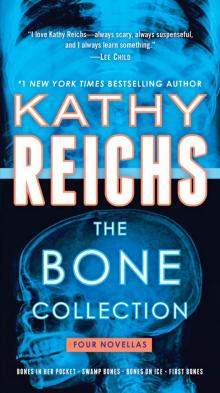 The Bone Collection: Four Novellas
The Bone Collection: Four Novellas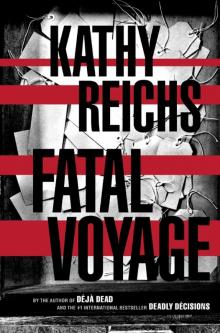 Fatal Voyage
Fatal Voyage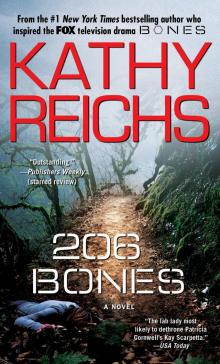 206 Bones
206 Bones Bones to Ashes
Bones to Ashes Terminal
Terminal Monday Mourning
Monday Mourning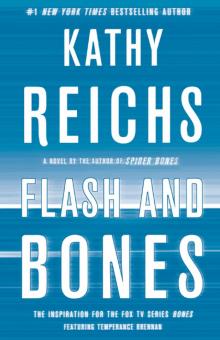 Flash and Bones
Flash and Bones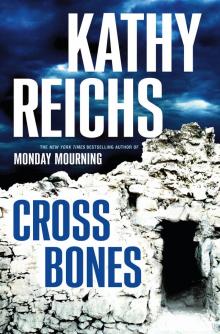 Cross Bones
Cross Bones Devil Bones
Devil Bones Break No Bones
Break No Bones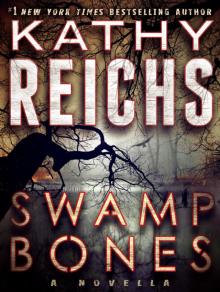 Swamp Bones
Swamp Bones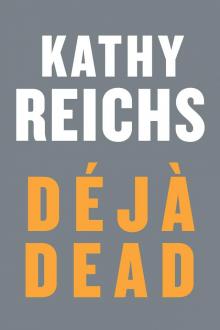 Déjà Dead
Déjà Dead Shock
Shock Spider Bones
Spider Bones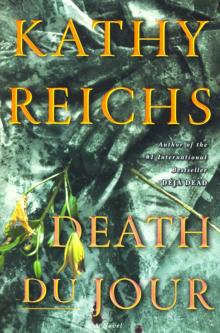 Death Du Jour
Death Du Jour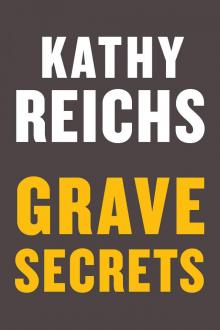 Grave Secrets
Grave Secrets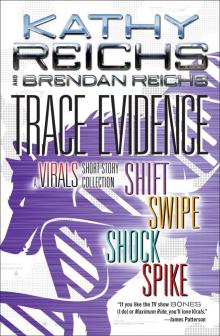 Trace Evidence: A Virals Short Story Collection
Trace Evidence: A Virals Short Story Collection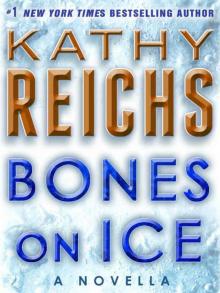 Bones on Ice
Bones on Ice The Bone Code
The Bone Code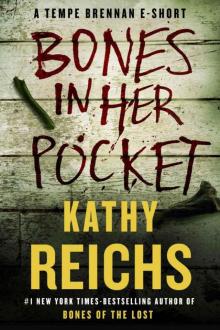 Bones in Her Pocket
Bones in Her Pocket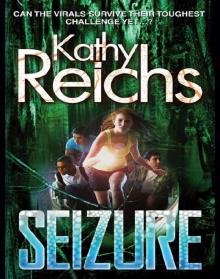 Seizure:
Seizure: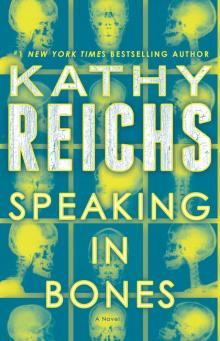 Speaking in Bones
Speaking in Bones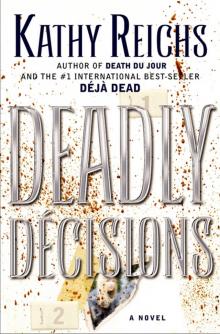 Deadly Decisions
Deadly Decisions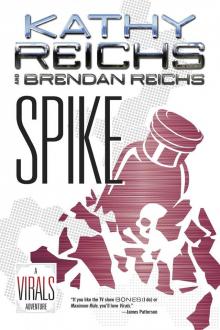 Spike
Spike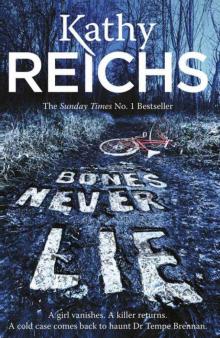 Bones Never Lie
Bones Never Lie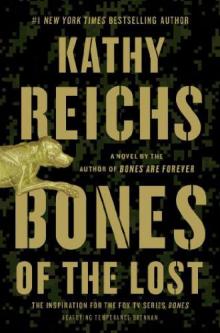 Bones of the Lost
Bones of the Lost Virals 03.5 - Swipe
Virals 03.5 - Swipe Exposure
Exposure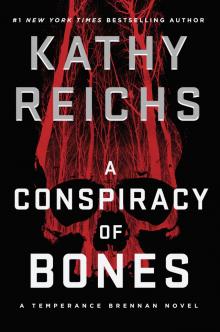 A Conspiracy of Bones
A Conspiracy of Bones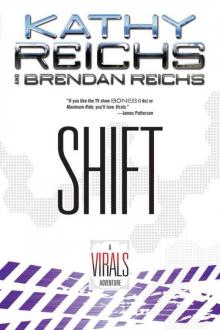 Shift (tory brennan)
Shift (tory brennan)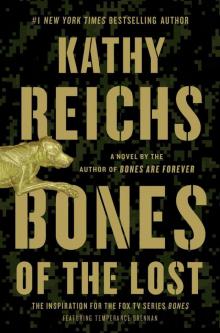 Bones of the Lost: A Temperance Brennan Novel tb-16
Bones of the Lost: A Temperance Brennan Novel tb-16 Virals tb-1
Virals tb-1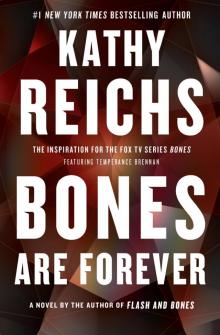 Bones Are Forever tb-15
Bones Are Forever tb-15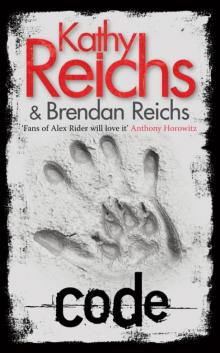 Code tb-3
Code tb-3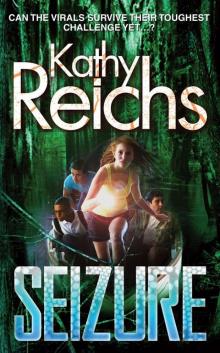 Seizure tb-2
Seizure tb-2 Deadly Descisions
Deadly Descisions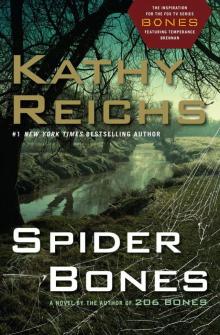 Spider Bones: A Novel
Spider Bones: A Novel